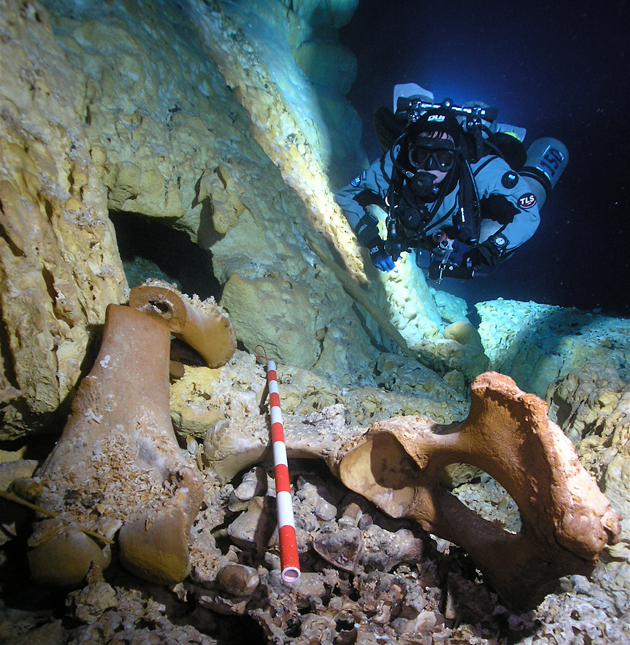Discovery in the Deep
An underwater cave in Mexico could hold the oldest human remains in the Americas.

In an underwater cave along the coast of Mexico lay the remains of a mastodon and a human skull that could exceed 13,000 years in age — possibly the oldest human remains ever discovered in the New World.
A team of archaeologists co-led by Dominique Rissolo, SDSU adjunct archaeology professor and executive director of Waitt Institute, has recently been awarded a grant from the Archaeological Institute of America to protect the cave and prepare it for further archaeological research.
“It is a very rare site,” Rissolo said of the cave, which is located near Tulum, along the Caribbean coast of Mexico. “It is not every day that an archeologist gets to work with such important remains, so they need to be treated with great care.”
Protecting the cave
Rissolo’s project, in conjunction with Mexico’s National Institute of Anthropology and History and Global Underwater Explorers, has created a system of platforms for archaeologists to gain easier access to the site, as well as facilitating and controlling access to the entrance of the cave.
“It is not every day that an archaeologist gets to work with such important remains...”
A large concern for Rissolo’s team is securing the site from curious cave divers. While Rissolo appreciates the divers’ interest, he needs to control the amount of human presence in the cave.
“This is an exceptional case, and it’s incredibly fragile,” Rissolo said of the cave. “If someone were to move one of those bones, a tremendous amount of information will be lost.”
Perfect preservation
Researchers have to dive about 4,000 feet horizontally in order to reach the pit of the cave, where the archeological deposits were found about 140 feet under water at the bottom of the pit.
The low oxygen levels at that depth and the relatively static environment of the underwater cave preserved the remains for over thousands of years.
“This area is revealing a disproportionate amount of these kinds of sites,” Rissolo said. “The caves are more discoverable and better prepared because they’re flooded, which helps preserve the site.”
Next steps
Rissolo hopes to finish his project of securing and prepping the cave by July. Researchers will then begin planning for comprehensive imaging of remains.
They will work with National Geographic to use high-resolution digital photo technology to map the bottom of the cave and the distribution of remains.
Once the cave is mapped, archaeologists will run carbon-dating tests on the remains to find out if the bones are truly the earliest set of human remains in the Americas.
Discovery in the Deep An underwater cave in Mexico could hold the oldest human remains in the Americas.



